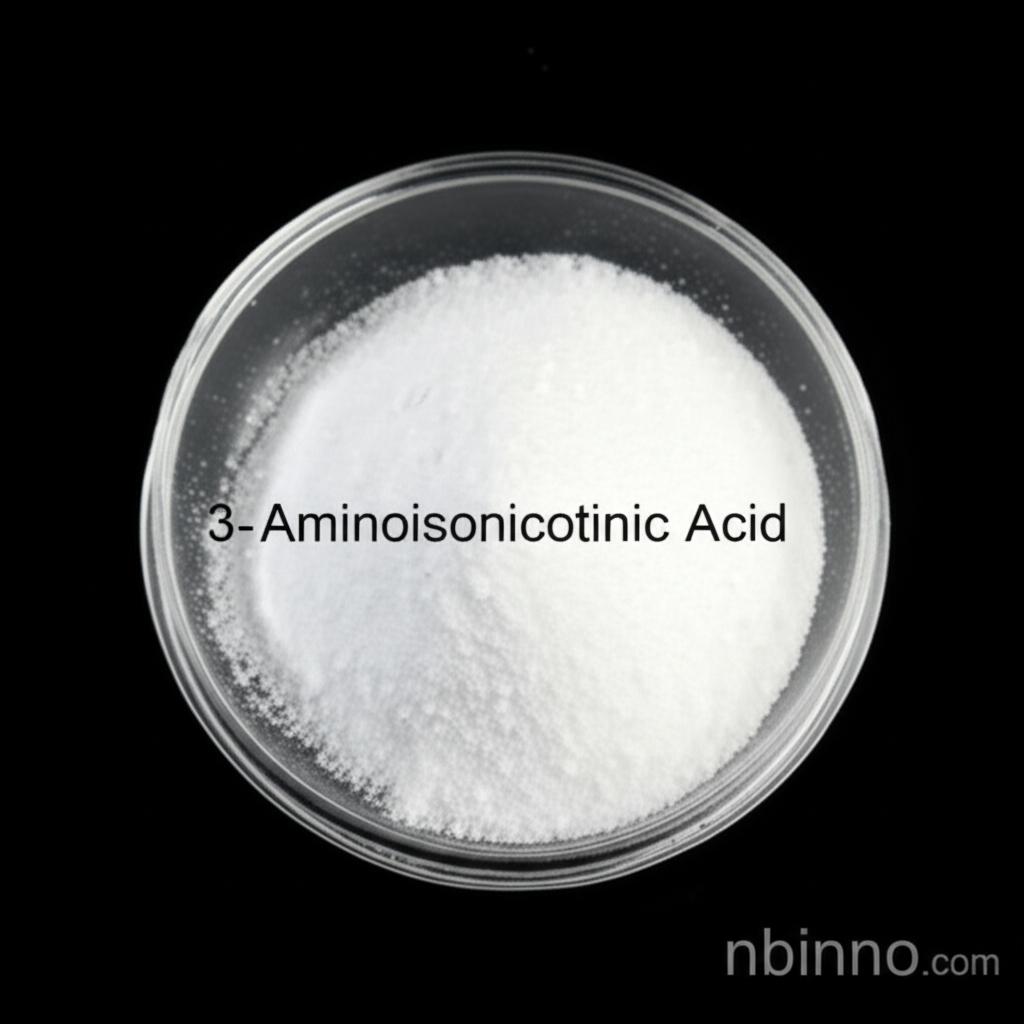3-Aminoisonicotinic Acid: A Versatile Intermediate for Pharmaceutical and Chemical Synthesis
Discover the key role of CAS 7579-20-6 in advancing drug discovery and chemical innovation.
Get a Quote & SampleProduct Core Value

3-Aminoisonicotinic Acid
As a vital organic intermediate, 3-Aminoisonicotinic Acid (CAS: 7579-20-6) stands out for its extensive utility in the synthesis of various pharmaceuticals and complex chemical structures. Its unique combination of functional groups makes it an indispensable component in the research and development pipeline.
- Explore the synthesis of anti-tuberculosis agents using 3-Aminoisonicotinic Acid as a key starting material.
- Leverage the properties of CAS 7579-20-6 for advanced organic synthesis projects.
- Source high-quality 3-Aminoisonicotinic Acid for your pharmaceutical intermediate needs.
- Understand the detailed chemical characteristics of 3-aminopyridine-4-carboxylic acid for optimal application.
Key Advantages
Enhanced Reactivity
The presence of both amino and carboxylic acid functional groups on 3-Aminoisonicotinic Acid significantly enhances its reactivity, allowing for diverse chemical transformations crucial in drug discovery.
Pharmaceutical Synthesis
Its established use as a pharmaceutical intermediate makes it a reliable choice for researchers aiming to develop novel therapeutic compounds, including potential anti-tuberculosis treatments.
Chemical Building Block
As a versatile building block, 3-Aminoisonicotinic Acid is essential for constructing intricate molecular architectures in both medicinal chemistry and materials science research.
Key Applications
Drug Discovery
Utilize the properties of 3-Aminoisonicotinic Acid in the synthesis of novel drug candidates, particularly for therapeutic areas like anti-tuberculosis treatments.
Organic Synthesis
Employ CAS 7579-20-6 as a crucial intermediate to build complex organic molecules for various research purposes.
Medicinal Chemistry
Integrate 3-aminopyridine-4-carboxylic acid into research to explore new therapeutic pathways and improve drug efficacy.
Materials Science
Investigate the potential of this compound in developing new materials due to its versatile chemical structure.
